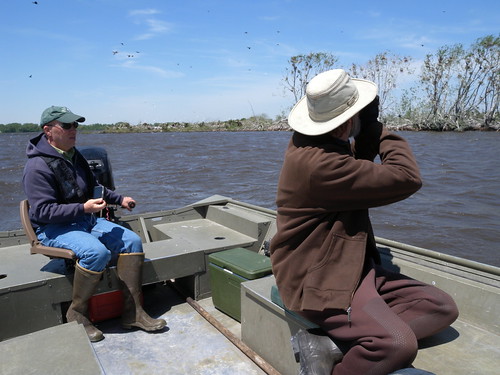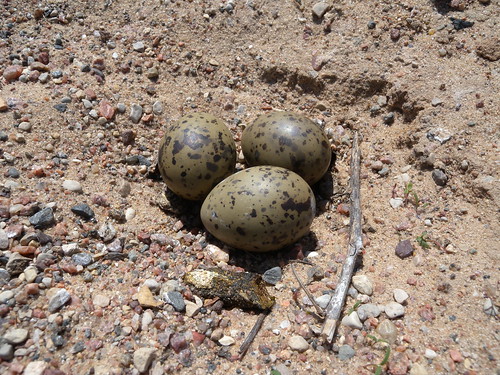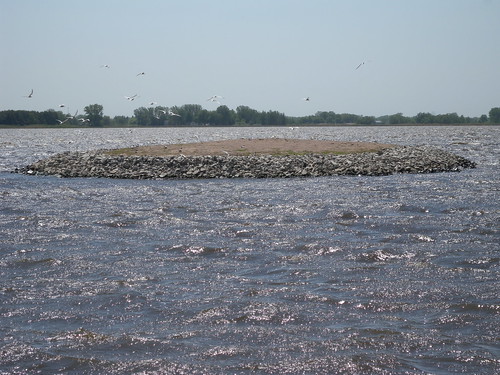 |
| Looking for Great Egrets - 120 nests on this island |
Common terns look similar to gulls, but they are smaller, have knife-shaped wings, and they’re most easily identified by the black caps on their heads. If you see one of these birds, keep an eye on it. Likely you’ll see it flying along and pause and hover in mid air. Suddenly it will drop from the sky as if had a heart attack and plunge into the water. A moment later it will reappear and head skyward, minnow in beak. This minnow may be a snack, a gift for a mate, or food for its brood.
On Lake Winnebago there were no common terns nesting on an island where they had in previous years, because trees had grown up. Common terns are not common in Wisconsin, in fact they are on the state’s endangered species list. The main reason is they require nesting sites that are on beaches, or islands far from land predators. They like a nice view of the horizon and if a site does not have one, they will not nest. Common terns nest in colonies. In Wisconsin there are only four, two on Lake Superior and two in Winnebago County. This island on Lake Winnebago would have been the fifth. The habitat of common terns has become increasingly scarce as beaches are developed and the sand bars of rivers disappear under reservoirs. Because of this, the DNR and local partners have constructed two nesting islands, one in Lake Butte des Morts and the other in a large pond between Oshkosh and Winneconne.
 |
| Common Tern Nest and Eggs |
 |
| Common Tern Nesting Island |
Note: Please stay clear from these islands. Too much human disturbance can cause the entire colony to abandon the site.
The endangered Forster’s tern also nests on Lake Poygan, but unlike the common tern it nests on floating mats of vegetation. The two species look very similar and are most easily differentiated by their calls. High water and winds blew all the Lake Poygan birds’ nesting material away and they are not nesting here this season. Much larger Caspian terns also visit the area, but do not breed.
No comments:
Post a Comment